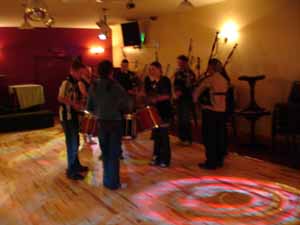Last year we discovered that an anchor had been raised from the seafloor around Saddle Head by some Achill fishermen in the late 1960s. We successfully tracked it down and got a look at it, but didn’t have time to fully record it. This is one of our objectives this year.
Not only was the iron anchor itself brought to the surface, but its two-piece wooden stock was as well. Both components have survived remarkably well. The anchor is about 2.5 m in length. One of its flukes has broken off, possibly during its removal from the sea-floor around 40 years ago.
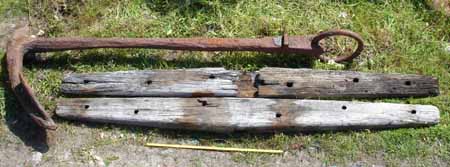
Even more amazing than the anchor’s preservation is that the name of its ship was branded into the wooden stock! The letters SCEPTRE, while faded, can be clearly seen on its surface.
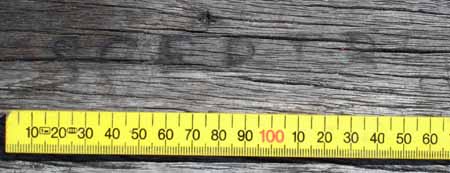
Archival research indicates there are two possible ships by this name which wrecked off Achill in March 1841. The only record of the first is a brief account of a vessel named Sceptre of Limerick reported in the protestant mission newspaper, the Achill Missionary Herald.
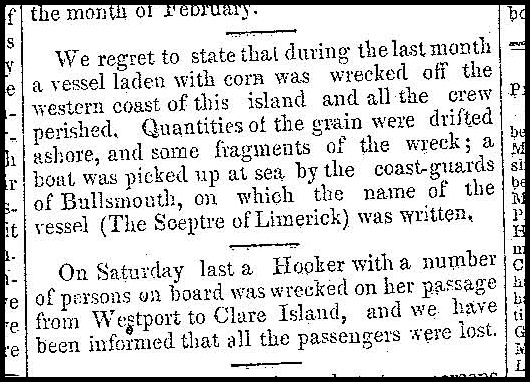
Courtesy of the National Library, Dublin (29 Apr 1841:48).
It is possible that this ship was named Sceptre of Limerick, or else it may have been simply the Sceptre whose home port was Limerick. The “western coast” of Achill mentioned in the newspaper description could very well indicate Saddle Head, where this anchor was raised over 100 years later.
The second candidate named Sceptre was also lost in March 1841, and it is likely that this is the same vessel called Sceptre of Limerick in the Achill Missionary Herald. This Sceptre was a 134-ton brig whose homeport was Yarmouth on the Norfolk coast of England. According to the Parliamentary records we found in the National Library in Dublin, Sceptre set sail on 27 February 1841 from Galway (west coast of Ireland, south of Achill) bound for London, but was never seen again, and “supposed lost near Blacksod Bay” (north of Achill, which could certainly refer to Saddle Head). This document also indicates Sceptre was built in 1827, making her 14 years old at the time of her loss, lists her Lloyd’s insurance rating as AE 1-40, and identifies her captain as a man named Spink.
The first step to recording this anchor is to thoroughly photograph it. This includes close-up shots of tiny details, and overall views such as the one being taken by Kevin in this picture. He is trying to approximate a plan or bird’s eye view of the anchor by getting well above it.
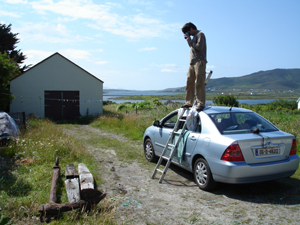
The next step is to position a level line along the anchors length, just above its surface.
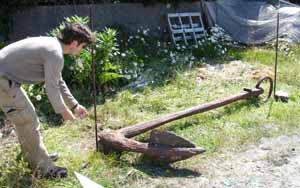
Side view of the upper end of the anchor, showing the ring (the tie-off point for the hawser or anchor rope) and the stock keys. These projections (vertical in this picture) served to hold the wooden stock snugly in place.
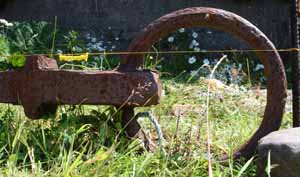
Once the line is in place, a tape measure is laid out parallel to it. Kevin Cullen of the University of Wisconsin-Milwaukee proceeds to take measurements from the level line to record the exact shape of the anchor.
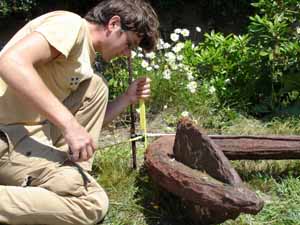
He relays the information to Chuck, who is making a scaled drawing of the anchor in both plan and side views.
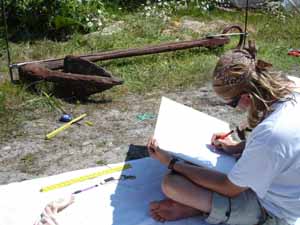
We finish recording the iron anchor the following day. Afterwards, we go to Gielty’s pub to celebrate the Fourth of July, American Independence Day. Gielty’s pub and coffee shop throws the students of the Achill Archaeological Field School (who are mostly American) a Fourth of July party every year.
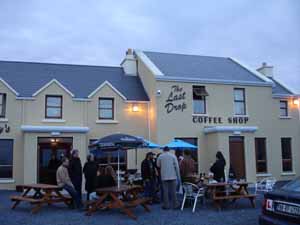
The party is great, complete with an American-style barbeque handled by our Achill hosts.
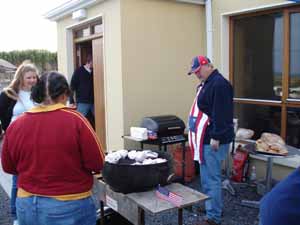
Michael Gielty, who used to run the pub before passing the reins to his son Alan, has arranged a special treat for us: a bagpipe band made up of high school-aged young people from the village of Dookinella performs for us. What a way to celebrate the Fourth!
